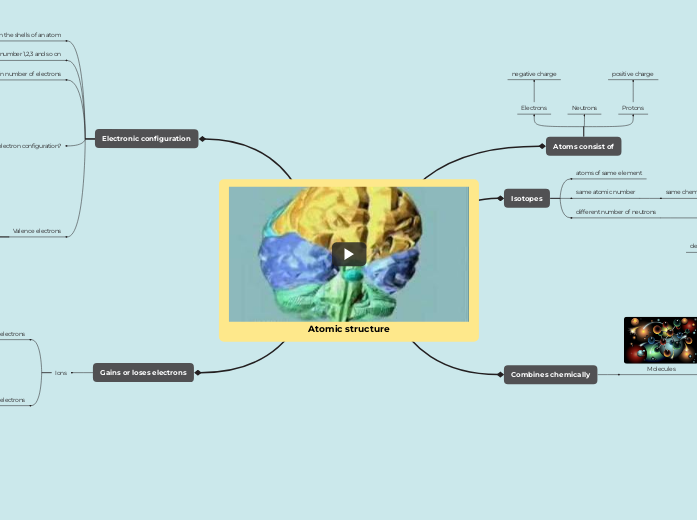Atomic structure
Atoms consist of
Electrons
negative charge
Neutrons
Protons
positive charge
Isotopes
atoms of same element
same atomic number
same chemical properties
same electronic configuration of both isotopes
different number of neutrons
different physical properties
density
melting point
boilling point
Combines chemically

Molecules
of compounds
atoms of different elements
methane
ammonia
water
carbon dioxide
hydrochloric acid
of elements
atoms of same elements
nitrogen
hydrogen
oxygen
chlorine
phosphorus
Electronic configuration
electrons arranged around the nucleus in the shells of an atom
shells number 1,2,3 and so on
each shell can occupy a certain number of electrons
How to find electron configuration?
find the proton number of the atom
find the derived number of electrons
arrange electrons in shells
electrons start occupying new shells when previous ones are occupied
Valence electrons
find in outermost occupied shell of an atoms
outermost shell=shell furthest from the nucleus
nature of elements determined by the number of valence electrons
1-2 metallic
aliminium with 3 is an exception
4-8 non-metalic
Gains or loses electrons
Ions
Gain electrons
anions
non-metals
ions are negatively charged
Lose electrons
cations
metals
ions are positively charged
